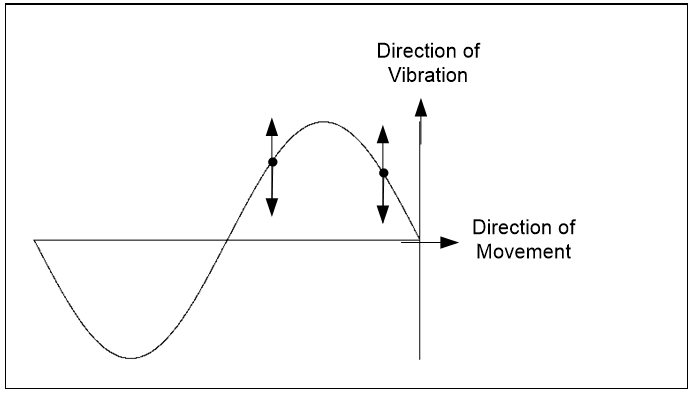A wave, by definition, vibrates in a medium, so what moves when light does? It is said that the electro-magnetic field does, but that movement isn’t physical, so physics just declares that:
“… we accept as nonexistent the medium that moves when waves of quantum mechanics propagate.” (Laughlin, 2005), p56.
After all, if quantum waves don’t exist, no medium is needed to transmit them! Electromagnetic field theory then glibly explains light by saying that electric changes cause magnetic changes, and magnetic changes cause electric changes, in a circular fashion, so light is said to be a:
“… self-renewing field disturbance.” (Wilczek, 2008), p212.
Yet what renews the fields that renew? That an electric field powers a magnetic field that powers the electric field is like Peter paying Paul’s bill, and Paul paying Peter’s bill. With such logic, I could borrow a million dollars now and never pay it back. If light self-renews, it is a cosmic Ponzi scheme, and the perpetual-motion machine long-sought by medieval alchemists is the photon!

Light waves never fade but waves that move matter up and down (Figure 3.10) produce friction by the second law of thermodynamics, so they always fade, with no exceptions. Yet light that has traveled in space for billions of years hits our telescopes the same as local light, so is it a frictionless wave? If so, it can’t arise from matter moving, but how can vibrating nothing (space) create something (light)?
If light is a wave that can travel through space, empty space must be its medium, so empty space isn’t empty. In this model, empty space is constantly active, generating a null result, hence the:
“… vacuum state is actually full of energy…” (Davies & Brown, 1999), p140.
Instead of particles moving in empty space, light is now a wave on a surface that supports it. Instead of vibrating nothing, it now vibrates something, namely the quantum network. Instead of electrical and magnetic fields mutually causing each other, which is illogical, the quantum network causes both. Space then has energy because the quantum network is always on, to power any light that passes, just as an idle computer is always on to respond to any keystroke (Note 1). Physical waves always fade but quantum waves don’t, because they are sustained by a network that can also restart them if needed. Instead of being mostly dead, our universe is now literally pulsing with activity.
What then moves when light does? In network terms, the answer is processing. In computing, processing sets values, so when a laptop runs a game, it just sets values. In a game like World of Warcraft, these values generate the game, but we see monsters not the computer code. Likewise, the quantum values that generate our world have no meaning to us. Feynman called these values vector potentials, Born called them probability amplitudes, Hiley called them quantum potentials (Davies & Brown, 1999) p138, and others refer to the quantum function (ᴪ), but what we call them doesn’t matter. What matters is that they cause physical events, and this is why quantum theory works.
Note 1. Processing must always run, so an “idle” computer still runs a null cycle, so it isn’t doing nothing.